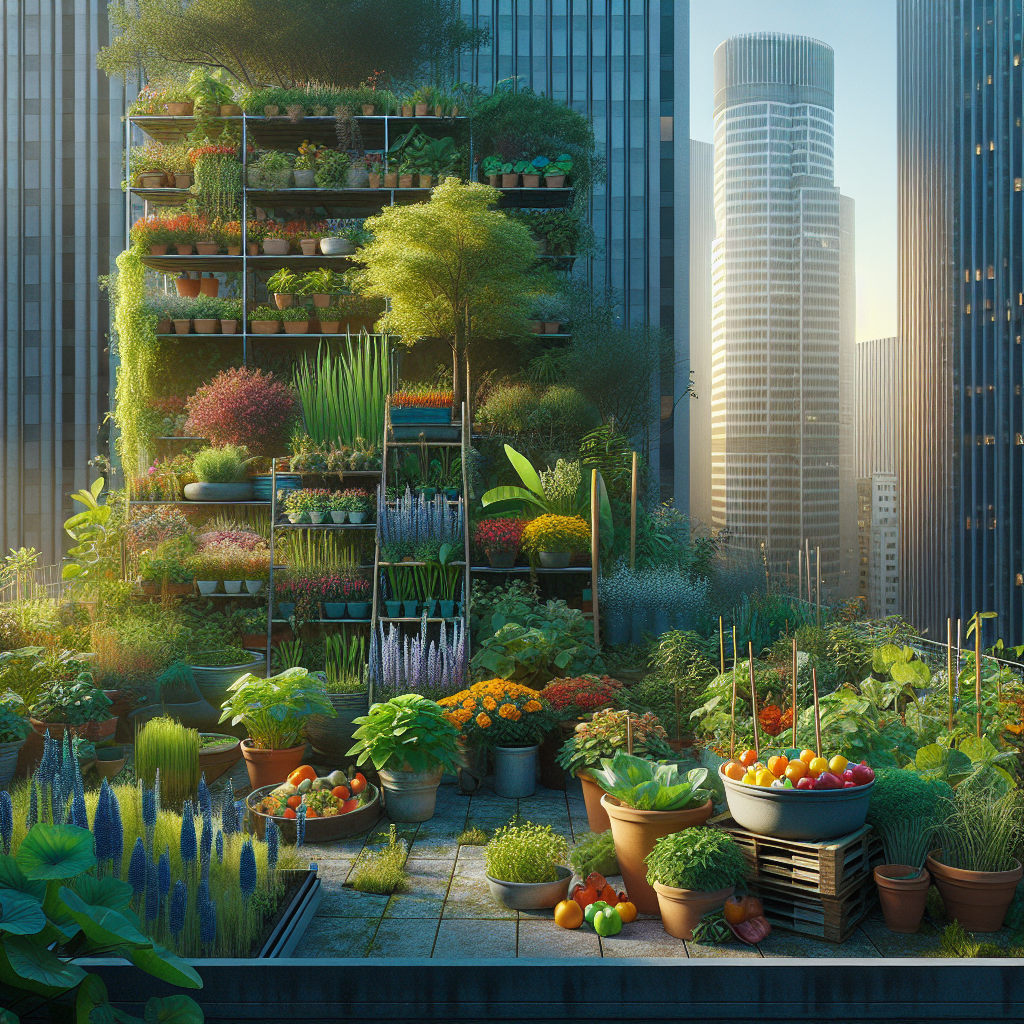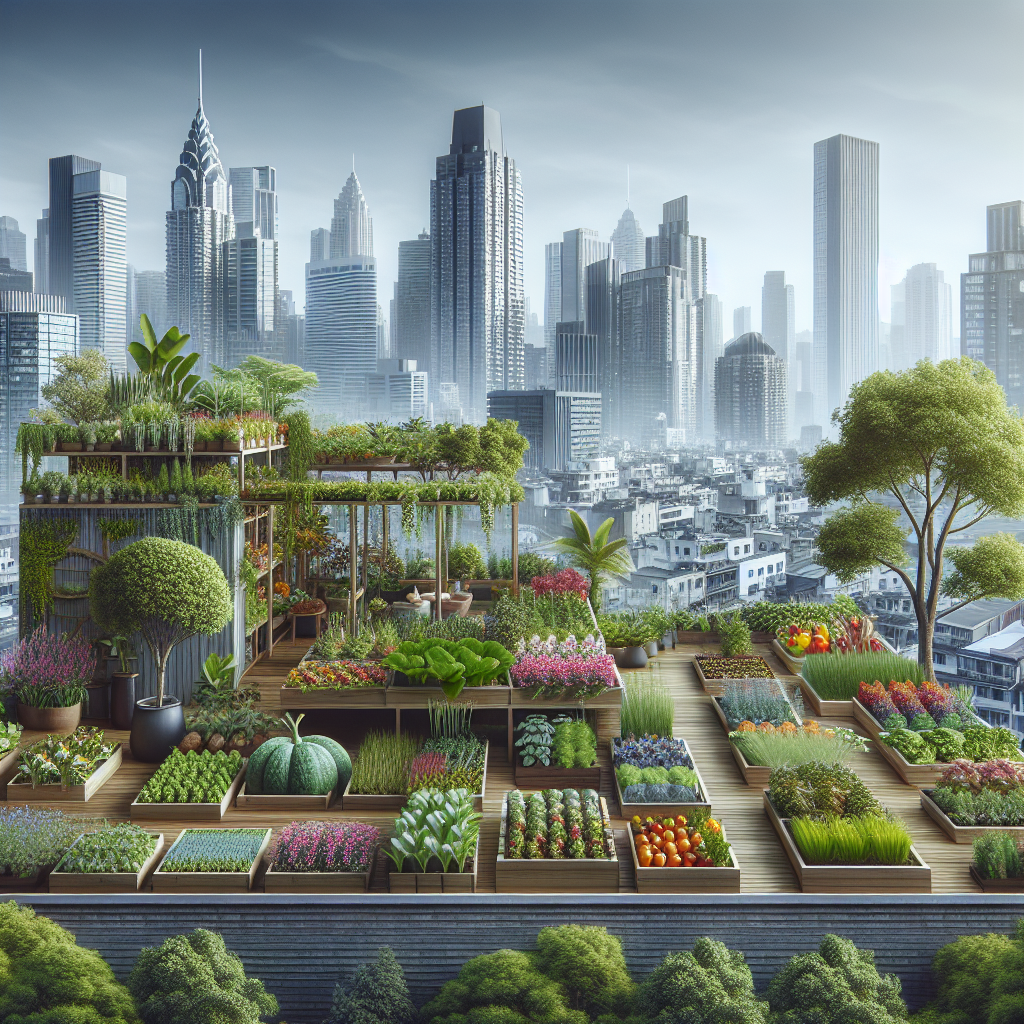Urban gardening is an increasingly popular trend among city dwellers looking to add a touch of nature to their concrete surroundings. With limited space to work with, it might seem challenging to grow a thriving garden, but with some creativity and the right hacks, you can transform even the smallest backyard into a green oasis. Whether you’re a seasoned gardener or a complete newbie, urban gardening offers numerous benefits including fresher produce, improved mental health, and a more sustainable lifestyle.
One of the main advantages of urban gardening is the ability to maximize your space efficiently. From vertical gardens to container gardening, there are plenty of innovative solutions that allow you to grow a variety of plants in restricted areas. Additionally, urban gardening encourages the use of eco-friendly practices such as composting and rainwater harvesting, which can significantly reduce your environmental footprint.
If you’re ready to dive into the world of urban gardening, you’ve come to the right place. Our blog is packed with *practical tips* and *creative ideas* to help you get started and succeed. Visit our website to learn more and get started today!
Maximizing Small Spaces

When it comes to backyard gardening hacks for urban dwellers, making the most out of limited space is crucial. One of the best ways to achieve this is through vertical gardening. By using walls, fences, and trellises, you can grow plants upward rather than outward, saving precious ground space. *Hanging planters*, *stacked pots*, and *wall-mounted shelves* are excellent options for vertical gardening.
Another effective method is container gardening. Containers come in various sizes and can be easily moved around to optimize sunlight exposure and accommodate different plants. Consider using self-watering containers to reduce maintenance and ensure your plants get the right amount of moisture. Additionally, repurposing household items like buckets, cans, and old furniture for planting can add a unique touch to your garden while cutting costs.
Intercropping is another technique to consider. This involves planting two or more crops close together to save space and promote beneficial interactions. For example, you can grow shallow-rooted herbs alongside deeper-rooted vegetables to maximize soil use. Companion planting, such as pairing tomatoes with basil, can also help deter pests and improve plant health.
Lastly, don’t forget to utilize windowsills and balcony railings. These often-overlooked areas can be perfect spots for growing herbs, flowers, and even small vegetables. With a bit of imagination and planning, you can turn every inch of your urban space into a productive garden.
Vertical Gardening Solutions
For urban dwellers, vertical gardening solutions offer an innovative way to cultivate a lush garden without needing a large yard. One popular method is using trellises and arbors. These structures support climbing plants like tomatoes, cucumbers, and beans, allowing them to grow upwards and save ground space. You can easily make or purchase trellises and arbors to fit your specific needs.
Another excellent vertical gardening option is the use of living walls. These are essentially vertical panels covered with vegetation. Living walls can be constructed using a variety of materials such as pallets, metal grids, and plastic containers. They not only maximize space but also improve air quality and add a unique aesthetic to your garden.
Hanging gardens are also a fantastic way to grow plants vertically. You can use hanging baskets, pots, or even repurposed items like old shoes or bags. This method is particularly useful for growing herbs and trailing plants. For an eco-friendly option, consider using coconut coir or moss-lined baskets, which provide good drainage and aeration for plant roots.
Stackable planters are another versatile solution. These tiered containers allow you to grow multiple layers of plants in a compact footprint. They are ideal for growing a variety of herbs, strawberries, and small vegetables. Stackable planters can be easily moved and rearranged, making them a dynamic addition to any urban garden.
Lastly, consider incorporating window boxes and railing planters into your vertical gardening strategy. These can be attached to windowsills, balcony railings, or fences, providing additional planting space for flowers, herbs, and small veggies. By utilizing vertical gardening solutions, you can transform even the smallest urban space into a thriving green oasis.
Container Gardening Tips

Container gardening is a versatile and space-efficient method perfect for urban dwellers looking to maximize their small spaces. To get started, select the right containers. Ensure they have adequate drainage holes to prevent waterlogging, which can lead to root rot. Pots made from materials like terracotta, plastic, or ceramic are popular choices, each offering different benefits in terms of insulation and durability.
The choice of soil is crucial for the success of your container garden. Opt for a high-quality potting mix that is light, well-draining, and rich in organic matter. Avoid using garden soil, as it tends to compact in containers and can hinder root growth. Adding compost or a slow-release fertilizer can provide essential nutrients to your plants.
When it comes to plant selection, choose varieties that thrive in confined spaces. Herbs, leafy greens, cherry tomatoes, and dwarf fruit trees are excellent options. Pay attention to the mature size of plants to ensure they won’t outgrow their containers. Companion planting can also be beneficial; for instance, pairing basil with tomatoes can enhance growth and deter pests.
Watering is a critical aspect of container gardening. Containers tend to dry out faster than garden beds, so regular watering is necessary. However, be cautious not to overwater. Check the soil moisture by inserting your finger about an inch deep into the soil. If it feels dry at that depth, it’s time to water. Mulching the surface can help retain moisture and reduce the frequency of watering.
Lastly, consider the placement of your containers. Most edible plants require at least 6-8 hours of sunlight daily. Place your containers in a location that receives ample sunlight, such as a balcony, windowsill, or rooftop. If natural light is limited, you can use grow lights to supplement. Regularly rotate the containers to ensure even light exposure and promote uniform growth.
By following these container gardening tips, you can enjoy a bountiful harvest even in the smallest urban spaces.
Utilizing Recycled Materials

Embracing sustainability in your backyard garden can be both environmentally friendly and cost-effective. One of the best ways to do this is by utilizing recycled materials. Start by repurposing household items that would otherwise end up in the landfill. For example, old plastic bottles can be transformed into self-watering containers. Simply cut them in half, invert the top part into the bottom, and use a piece of cloth as a wick to draw water from the lower reservoir to the soil.
Another great option is to use wooden pallets to create vertical gardens or raised beds. Pallets are often discarded by businesses and can be sourced for free or at a low cost. Ensure the pallets are heat-treated and free from harmful chemicals before using them. They can be stacked, painted, and arranged to suit your garden’s aesthetic while providing ample growing space for a variety of plants.
Old tires can also find a new life in your garden. They are perfect for creating tire planters. Paint them in vibrant colors to add a touch of whimsy to your garden, and stack them to create tiered planters for herbs and flowers. Make sure to drill drainage holes to prevent water accumulation.
For those who love to tinker, broken or unwanted furniture can become unique garden fixtures. An old dresser can be converted into a multi-tiered planter by filling the drawers with soil and plants. Similarly, a discarded ladder can serve as a vertical garden stand, perfect for displaying an array of potted plants.
Using kitchen scraps is another excellent recycling practice. Eggshells, coffee grounds, and vegetable peels can be composted to enrich your soil with essential nutrients. Egg cartons and toilet paper rolls make excellent seedling starters. Just fill them with soil and seeds, and once the seedlings are ready to be transplanted, plant the entire container directly into the ground, as these materials are biodegradable.
Incorporating recycled materials not only reduces waste but also adds a personal and creative touch to your urban garden. It’s a fantastic way to combine sustainability with gardening, ensuring that your green space is as eco-friendly as possible.
Low-Maintenance Plant Choices

One of the keys to a thriving urban garden is selecting the right plants. For those with busy schedules or limited gardening experience, opting for low-maintenance plant choices can make gardening more enjoyable and less time-consuming. These plants are resilient, require minimal care, and can thrive in various conditions, making them perfect for city dwellers.
Herbs are a fantastic starting point. Varieties like basil, mint, rosemary, and thyme are not only easy to grow but also incredibly useful in the kitchen. They require minimal water and can be grown in small containers on windowsills or balconies. Additionally, herbs are generally pest-resistant, reducing the need for frequent monitoring.
Succulents and cacti are other excellent options. These plants are well-known for their ability to store water, which means they can withstand infrequent watering. Succulents come in a variety of shapes and sizes, adding visual interest to your garden. They are ideal for small spaces and can be grown in shallow pots or even repurposed containers.
If you’re looking for flowering plants, marigolds and zinnias are superb choices. These hardy flowers are drought-tolerant and can thrive in poor soil conditions. They also attract beneficial insects like bees and butterflies, which can help with pollination in your urban garden.
For those interested in growing vegetables, consider planting radishes, lettuce, and cherry tomatoes. These vegetables are relatively easy to grow and have short growing cycles, providing a quick and satisfying harvest. They can be grown in containers, raised beds, or small garden plots, making them versatile for any urban setting.
Incorporating native plants is another smart strategy. Native plants are adapted to the local climate and soil, which means they require less water, fertilizer, and overall maintenance. Research the native flora of your area and choose plants that will naturally thrive with minimal intervention.
By selecting low-maintenance plants, you can enjoy the benefits of gardening without the stress of constant upkeep. This approach allows you to create a lush, green oasis in the heart of the city, even with a hectic lifestyle.
Visit our website to learn more and get started today! Click here.
Subscribe to our newsletter to get information delivered to your inbox on homesteading, growing food, food preparation, travel, fishing, and more.











